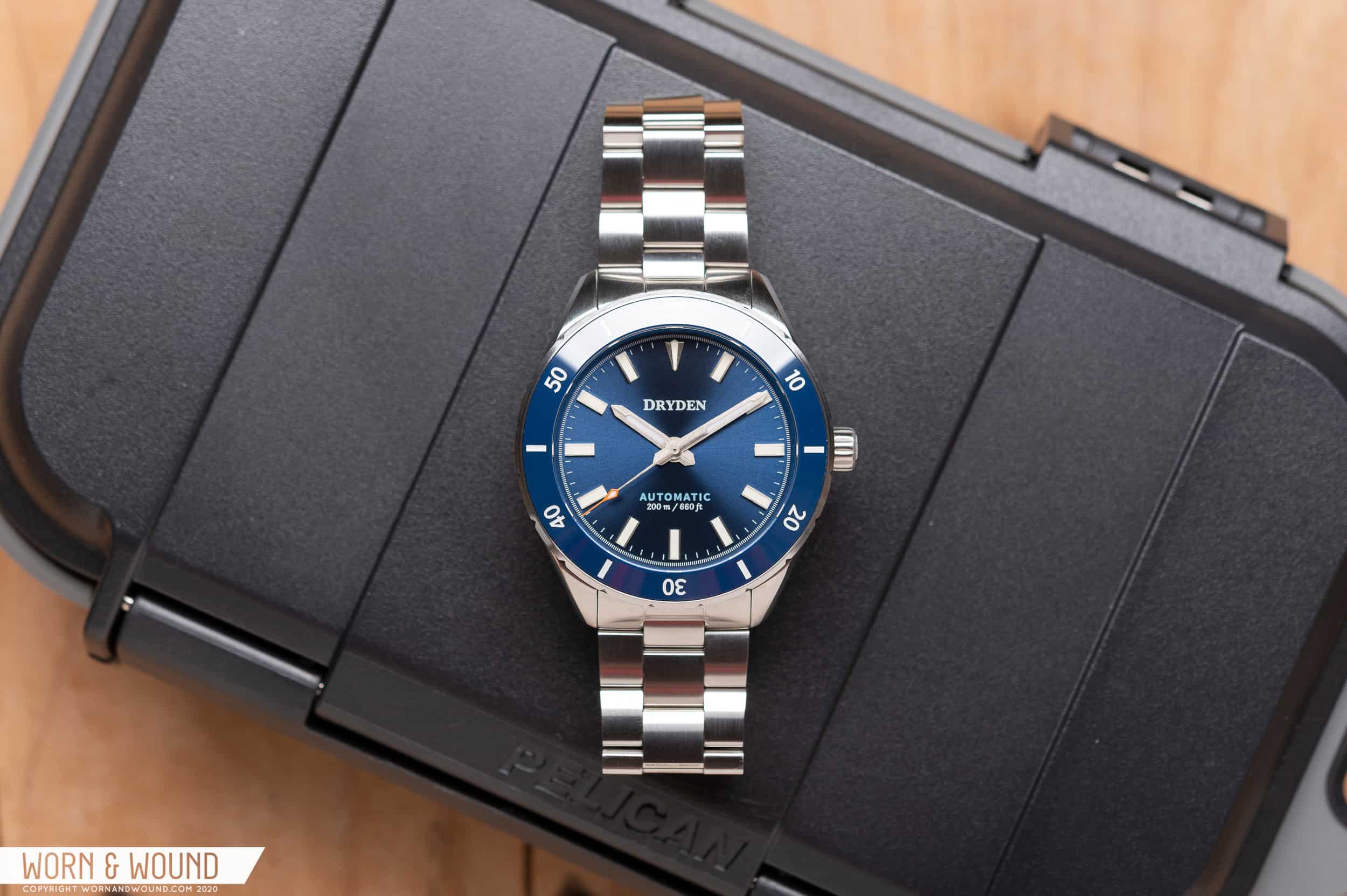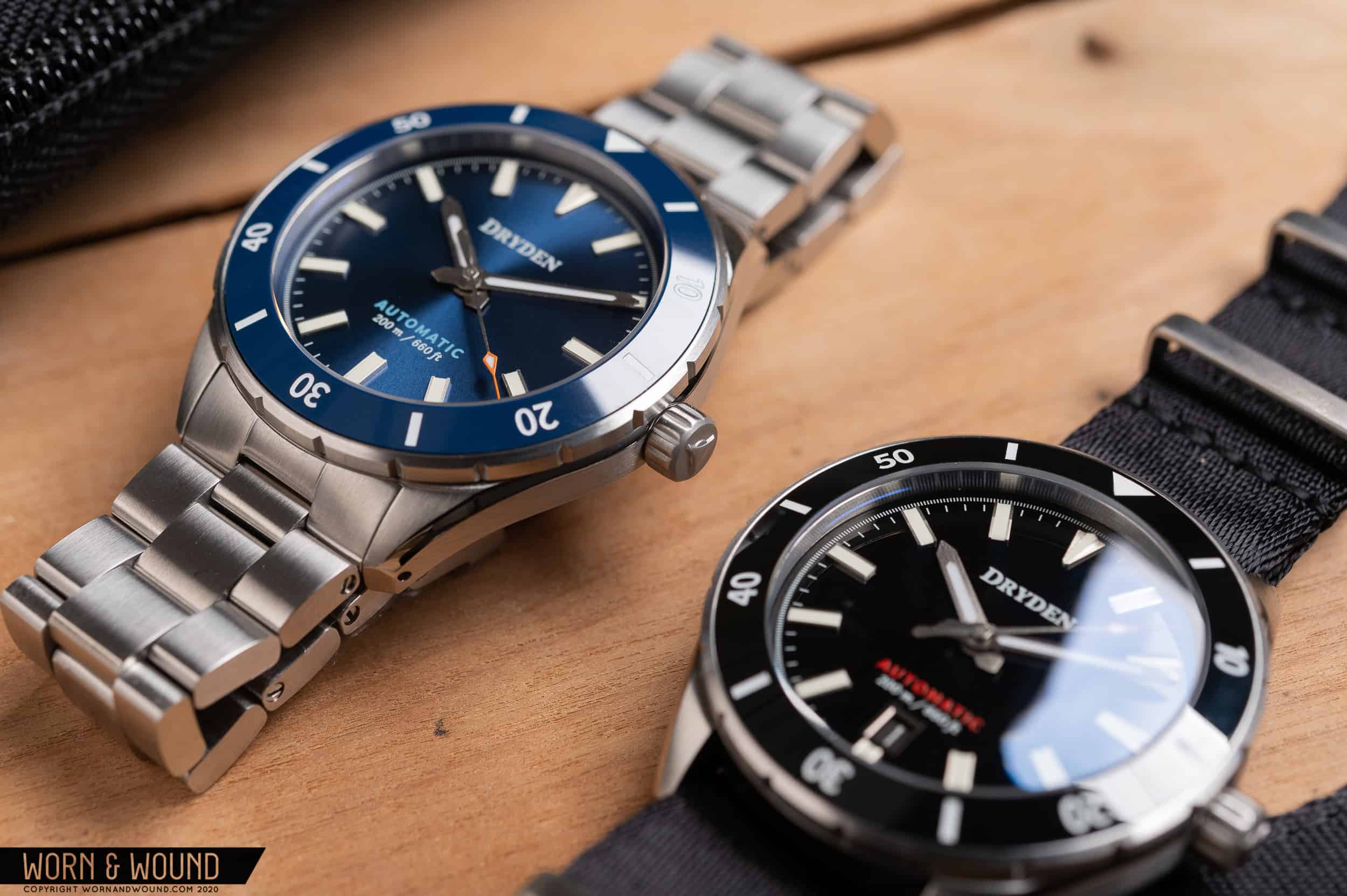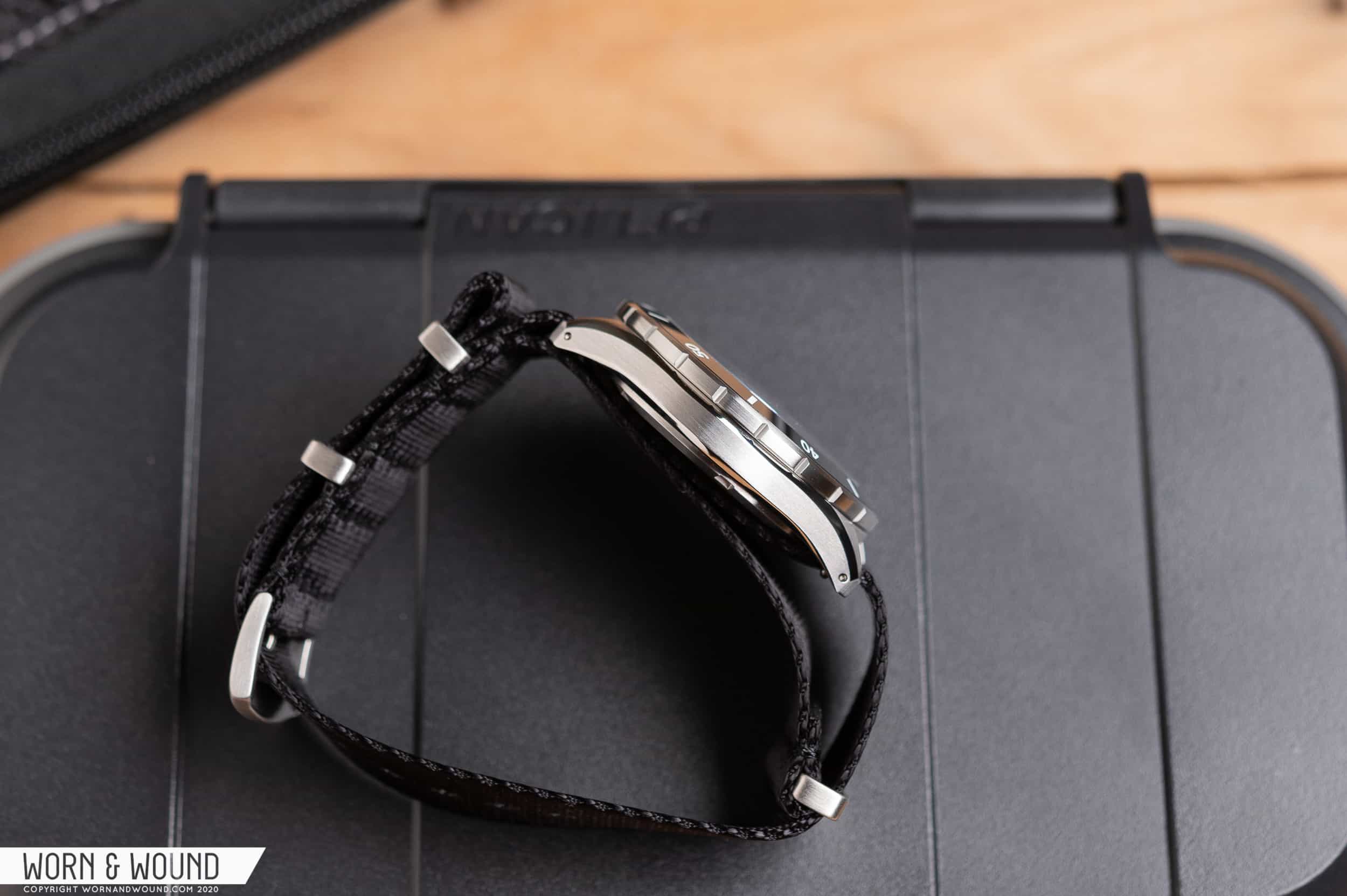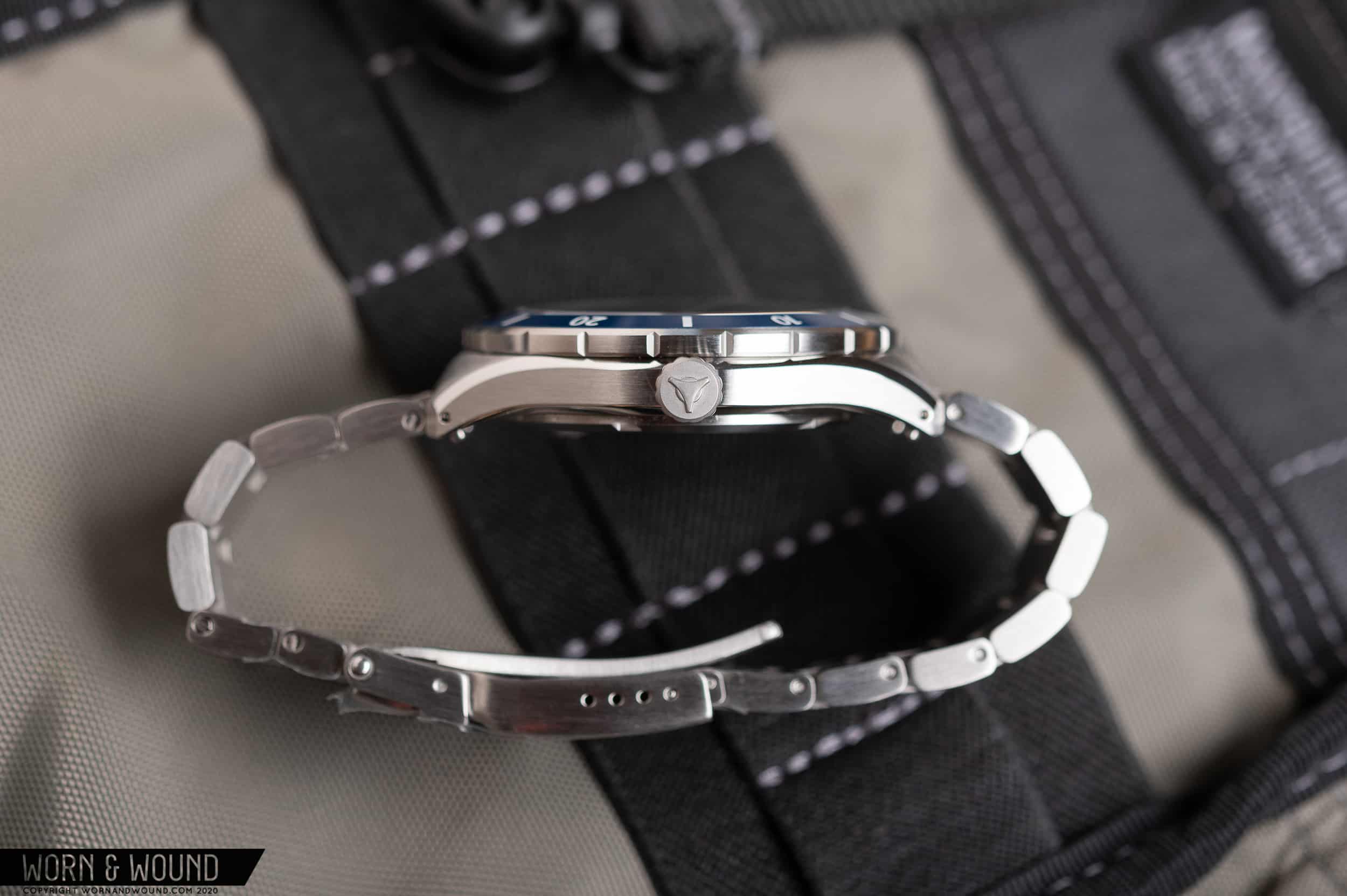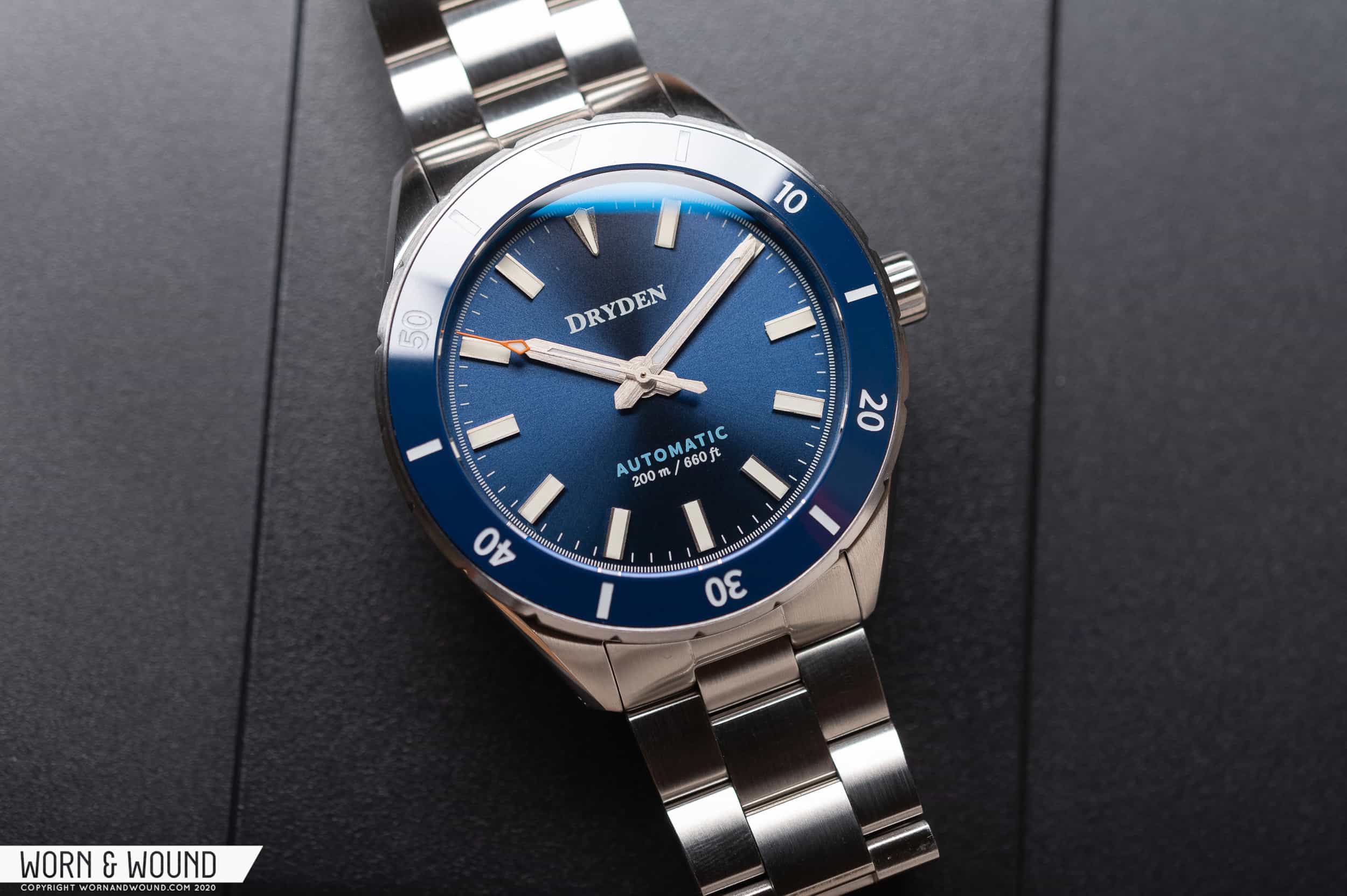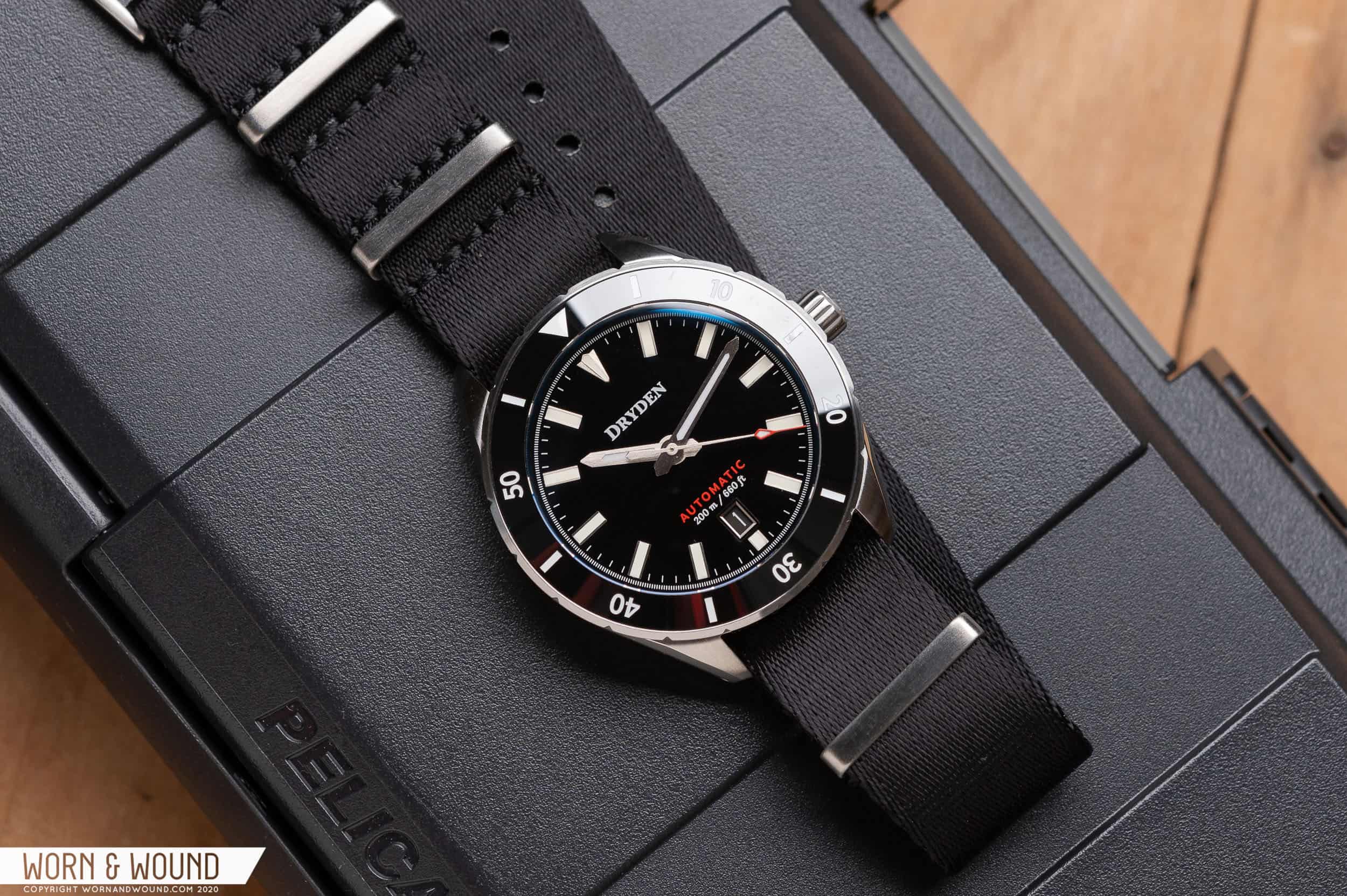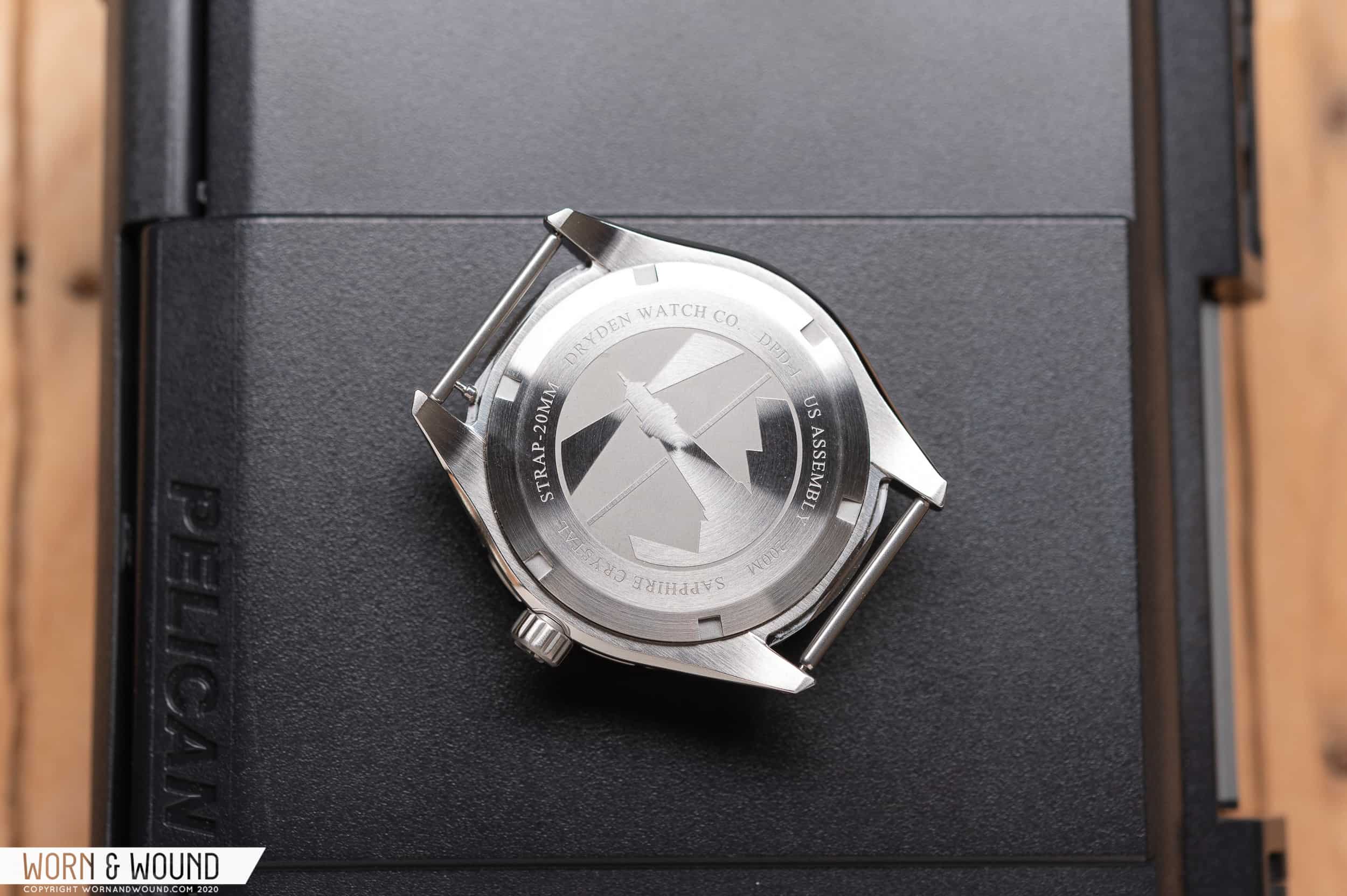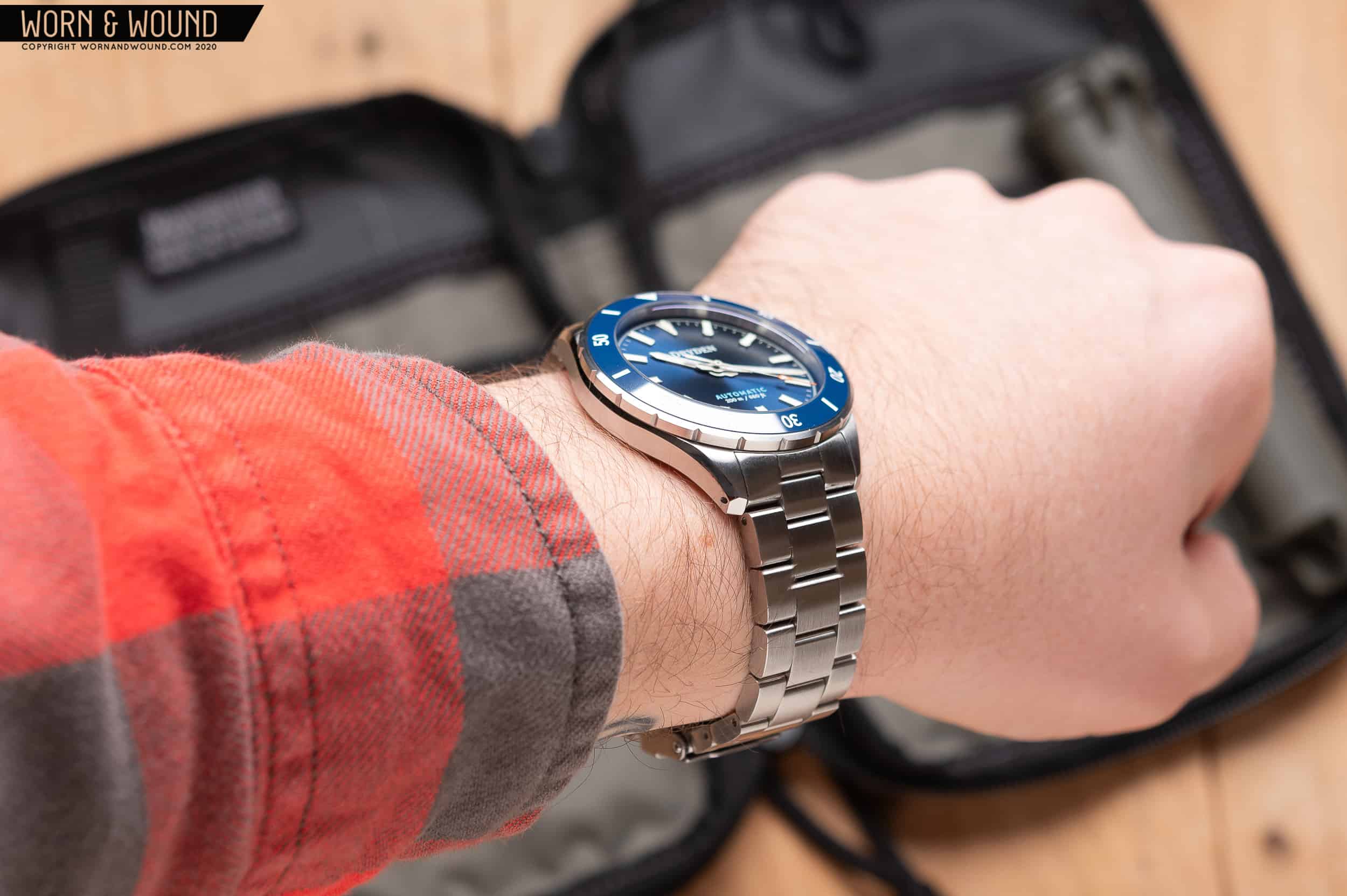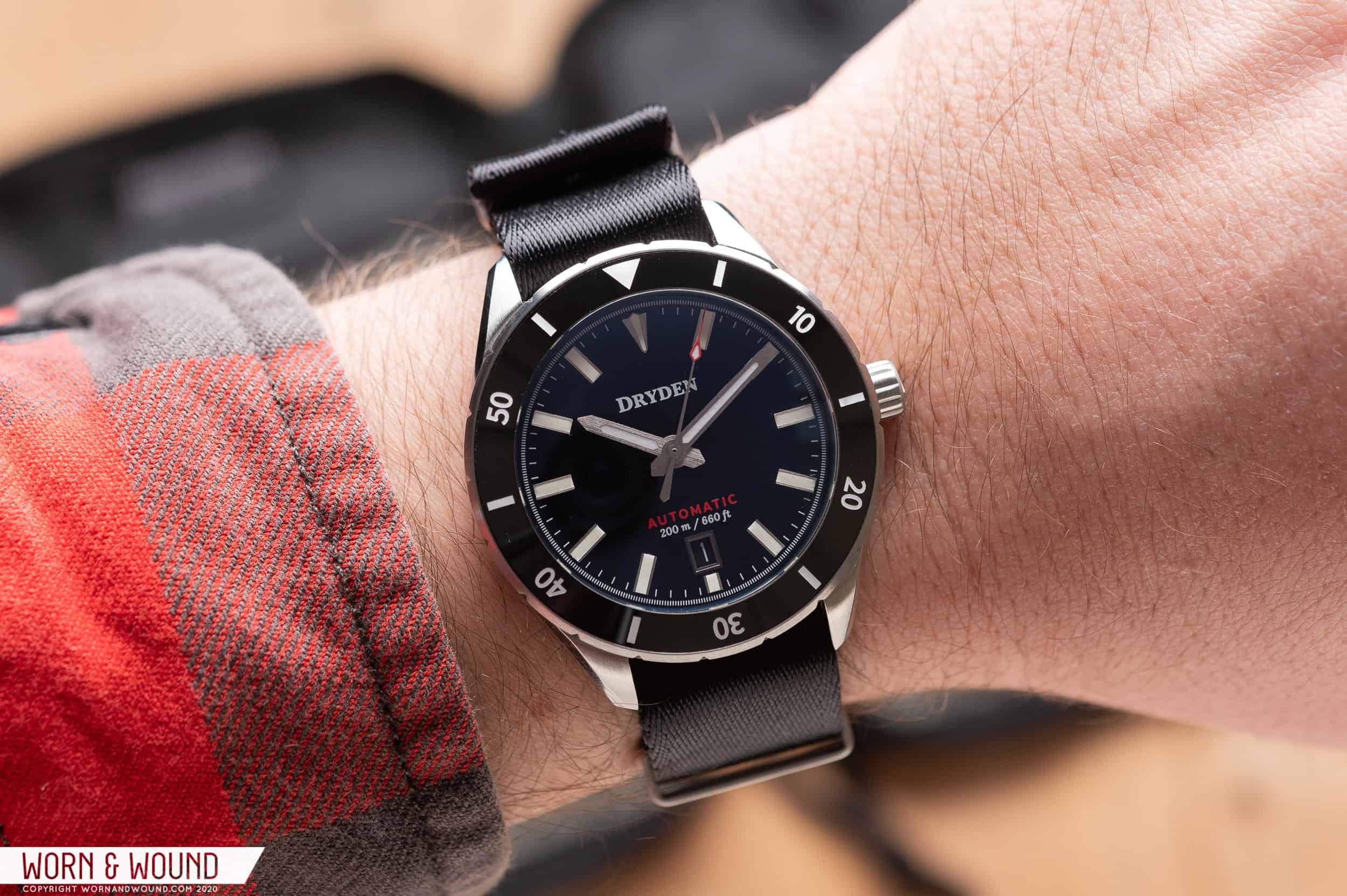Case
![]()
Double and triple checking the spec sheet confirms that the Pathfinder does measure in at 41mm wide. I just didn’t believe it, since the watch wears much smaller than the measurements imply. A millimeter or two in a product description is enough to turn people off from a watch, and the numbers don’t always tell the whole story. That’s the case here, as the 41mm housing of the Pathfinder wears much smaller on the wrist, and a lot of that is thanks to the 47mm lug-to-lug measurement and 11.8mm overall thickness (and that includes the sapphire glass).
The most surprising of the measurements is the thickness, or in this case, I’ll refer to it as thinness. Under 12mm for a 200m dive watch is quite the achievement, resulting in a very capable watch that’s also great as a daily wearer. It’s not just the 11.8mm that makes the watch feel so thin, it’s how the case is broken up between crystal, bezel, mid case, and case back that makes all the difference.
![]()
In profile, the most impressive thing about the Pathfinder’s case is the breakdown between crustal, bezel, mid case, and back. The domed sapphire crystal up top is very slightly domed. There’s no big vintage-style bubble going on, which keeps the overall thickness down. You can also see the slope of the ceramic bezel and where it meets the side surface of the steel portion of the bezel. While the cuts in the bezel are deep, they’re few and far between. Turning the bezel is a bit hard due to the lack of grip paired with the firmer action.
Just under the bezel is the mid case. It starts with a generous polished chamfer that transitions into the vertical brushed mid case with a sharp edge between the two finishes. The mid case itself is only a few millimeters tall, sloping downwards at the drilled lugs. The bottom of the mid case takes an angle inward to the case back in the form of another polished chamfer. Finally, the case back hangs slightly underneath the case, making up the remainder of the 11.8mm of watch. The proportions between each of these elements are balanced just right, while the mix of brushing and polished surfaces visually break up the case. It’s a clean design that wears well on the wrist.
![]()
At 3 o’clock, you’ll find a matte finished crown with a small design on the flat surface. The crown is a little bit small for a dive watch, and would benefit from a slight bump up in size. Matte finishing is a bit of an odd choice as well, since the crown is the only place it’s seen on the watch. The case design and finishing are very impressive, especially given the price range.









 Featured Videos
Featured Videos




